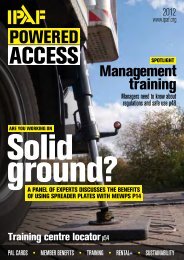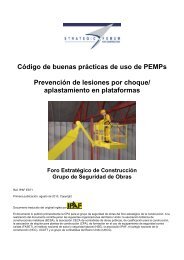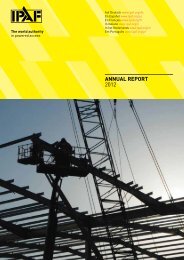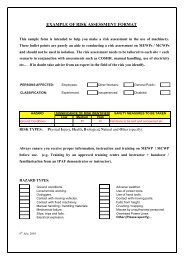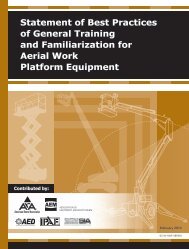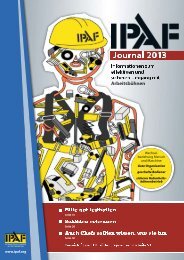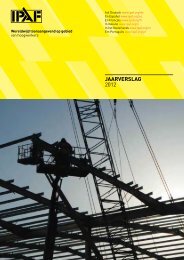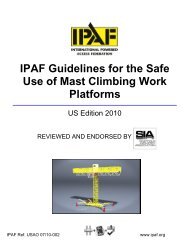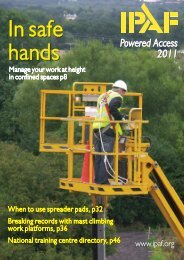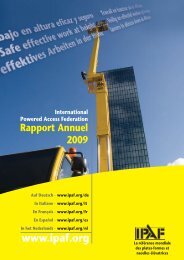You also want an ePaper? Increase the reach of your titles
YUMPU automatically turns print PDFs into web optimized ePapers that Google loves.
WORK AT HEIGHT<br />
High-level<br />
management<br />
Since the arrival of the Work at Height Regulations, site managers have more<br />
responsibility for safety than ever before. But are they aware of what they<br />
should be doing? Contract Journal’s Will Mann finds out in a discussion with<br />
HSE inspector Justine Lee, <strong>IPAF</strong> managing director Tim Whiteman, Bovis Lend<br />
Lease head of health and safety Andrew Brown, and Taylor Woodrow acting<br />
head of health and safety Steve Derbyshire.<br />
WM: Perhaps you could start, Justine,<br />
by telling us a bit about how the HSE’s<br />
‘Height Aware’ campaign has been<br />
going.<br />
JL: In spring this year, HSE participated<br />
in the campaign aimed at increasing<br />
awareness of the risks of falls from<br />
height. It was aimed at those who procure<br />
work and those who carry out the<br />
work in the building and plant maintenance<br />
sectors.<br />
We want people to understand the<br />
risks of working at height better, and<br />
show them some simple and sensible<br />
measures they can take to minimise the<br />
risks. We are trying to influence attitudes<br />
and behaviour, so that people are<br />
using equipment that is most appropriate,<br />
not what’s most readily available.<br />
We’ve done this by holding educational<br />
events such as safety awareness days<br />
and breakfast meetings. We also ran a<br />
media campaign, plus the traditional<br />
site inspections.<br />
WM: What sort of things have you<br />
found around the country – are people<br />
aware of the implications of the Work at<br />
Height Regulations (WAHRs)?<br />
JL: We’ve found lots of examples of<br />
good practice. For instance, one housing<br />
association had done a cost-benefit<br />
analysis for work on their domestic housing<br />
stock, such as roof repairs, gutter<br />
cleaning, aerial installation, that sort<br />
of thing, and established that MEWPs<br />
came out as the best option: there was<br />
no security issue, they were less disruptive<br />
to the householder, the MEWP was<br />
trailer-mounted so it was easily transported<br />
to site, and the purchase cost<br />
included operator training.<br />
WM: What has been the feeling among<br />
contractors about the post-WAHRs era?<br />
SD: I think the problem with the culture<br />
change that came in with the WAHRs<br />
was that a lot of rumours started<br />
because the regs were not prescriptive.<br />
TW: What would contractors like to see<br />
from the HSE in terms of guidance?<br />
SD: The problem our guys have is that<br />
– post WAHRs – there hasn’t been guidance<br />
on what to do in a certain situation.<br />
It’s perceived that ladders are a<br />
complete ‘no no’, and that if you end up<br />
having an accident involving a ladder,<br />
you’ve made a bad error of judgement.<br />
JL: Well ladders are certainly not<br />
banned. And in fairness, the HSE<br />
and the British Ladder Manufacturers<br />
Debating<br />
work at height<br />
responsibilities:<br />
Do managers<br />
know the pitfalls<br />
to avoid?<br />
10<br />
<strong>IPAF</strong> POWERED ACCESS REVIEW 2007







